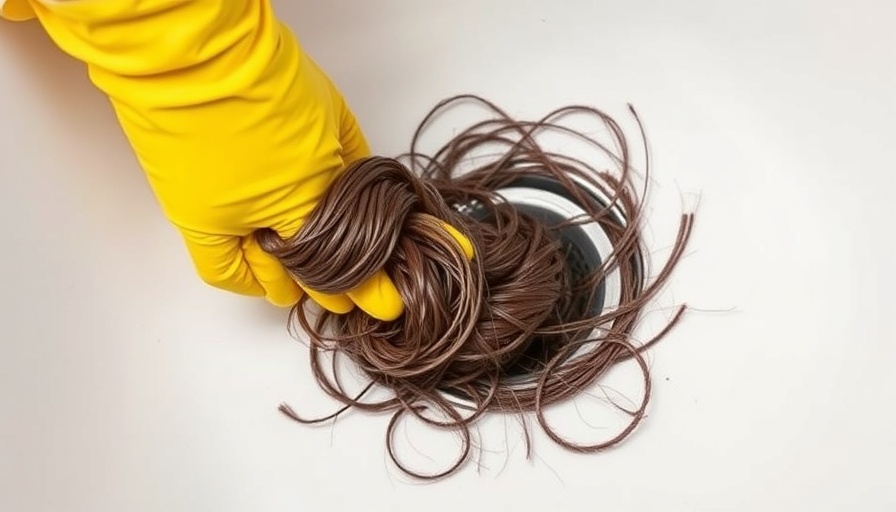
Preventing Clogs Starts with Awareness
Have you ever found yourself in a race against time when the bathroom sink refuses to drain during a family gathering? Drain clogs are frustratingly common, but with proactive measures, you can keep your plumbing system flowing smoothly. Understanding the causes of clogs will empower you to take steps that ensure your plumbing efficiency and hygiene in your home.
Know the Problem: Identifying Common Culprits
Recurrence of clogged drains often indicates deeper issues. For instance, tree roots infiltrating your plumbing can cause severe problems, especially in older homes. Hiring a professional to conduct a visual inspection of your pipes can identify such hidden issues early, saving you time and money long-term.
Smart Additions: Installing Lint Traps
As a DIY enthusiast, you might enjoy the simplest upgrades to your plumbing. Installing a lint catcher at the end of your washing machine's drain hose is an easy project that prevents fabric debris from sneaking into your pipes. This simple item acts as a barrier to lint and other small objects, promoting better drainage.
Soil Your Grease: The Correct Disposal Method
One straightforward yet often overlooked tip is to collect grease rather than pouring it down the drain. Keep a designated jar for grease disposal. Such small habits can prevent substantial clogs and contribute to a healthier plumbing system. Remember, warm grease flows down easily, but it congeals and brings about trouble when cooled.
Harnessing Nature: Bacterial Cleaners for Clogs
Another strategic DIY method involves using sold products that utilize bacteria to break down organic waste. These non-corrosive drain cleaners can assist in maintaining system health without adversely affecting existing septic systems. Utilize these cleaners consistently for lasting protection.
Emphasizing Daily Habits to Enhance Drain Performance
Creating positive habits can go a long way in maintaining your home plumbing system. Rinse your sink with hot water and a little dish soap regularly, or be mindful of the items entering your drains. By making small adjustments, you're not only ensuring a blockage-free future but also contributing to sustainable living principles.
A Final Note on Smart Home Management
Taking charge of your home maintenance through minor projects, de-cluttering, and smart disposals reflects a commitment to sustainable home management. Each small action taken today can result in a significant reduction of long-term headaches, like plumbing issues.
As you explore various DIY home improvement ideas and techniques, consider adding drain maintenance to your list of essential tasks. By prioritizing your plumbing health with thoughtful practices, you cultivate a healthier space for everyone in your home.
 Add Row
Add Row  Add
Add 




Write A Comment